Apache Tomcat: An Introduction (And How It Can Benefit You)
Choosing the right Java server is a tricky process. You want to feel confident that the one you use is stable and flexible enough to effectively develop and deploy websites.
Fortunately, Apache Tomcat is a popular option that offers plenty of reliability. It’s open source, and has stood the test of time over the past two decades. Not only does that mean it has excellent community support, but also that there’s plenty of information available on how to use it.
In this article, we’ll go into detail to explain what Apache Tomcat is. Then we’ll take a look at why you might choose it for developing and hosting sites, and how to install it. Let’s dive in!
An Introduction to Apache Tomcat
Despite its age, or perhaps because of it, Java is still one of the most popular coding languages used today. Many also consider it one of the best, likely due in part to the fact that it can run on just about any device.
Apache Tomcat is the most widely used open-source web server that specializes in Java:

Apache Tomcat implements Java Servlet, JavaServer Pages (JSP), and the WebSockets Application Programming Interface (API). Essentially, it’s a pure Java HTTP web server that enables Java code, and thus gives your website more cross-platform freedom than some of its alternatives.
How Apache Tomcat Can Benefit You
As we already mentioned, Java is a quality programming language to use if you want your website to work effortlessly on multiple platforms. Additionally, it’s easy to use, secure, flexible, and simple to maintain.
A Java-centric web server can, therefore, be a valuable tool if you’re developing a wide variety of projects. Apache Tomcat can help you expand your range so you can take on more clients and grow your career.
Plus, Tomcat is intuitive to set up as it comes with its own Windows Installer. However, there are several other routes you can take to get started, so you ultimately have control when it comes to how you run it. The element of user choice is also reflected in the suite of customization features it comes with.
Since it can run independently of Apache, it’s a stable platform, too. Even if the rest of the server fails, Tomcat should still plug along.
That’s certainly not all when it comes to Tomcat’s advantages. As its code is open-source, there’s a thriving online community that maintains it. Tapping into this network of developers will provide you with valuable resources and information.
Alongside that, there are plenty of online tutorials to help you make a smooth transition to utilizing this platform. Indeed, the Apache Tomcat website alone offers a wealth of resources, on a range of topics from startup settings to security guides.
Lastly, Tomcat provides a server environment that’s fast and has solid development time. Its reload and redeployment features let you update individual Java classes without having to restart the whole system, ultimately making your process more efficient.
How to Get Started With Apache Tomcat
Getting started with Apache Tomcat is simple. However, before you begin, you need to install the Java Development Kit (JDK) if you don’t already have it.
Once you have done so, you’re ready to jump in. To start, head to the Apache Tomcat homepage and find the Download button.
Clicking on it will take you to the Apache Tomcat Download Page:
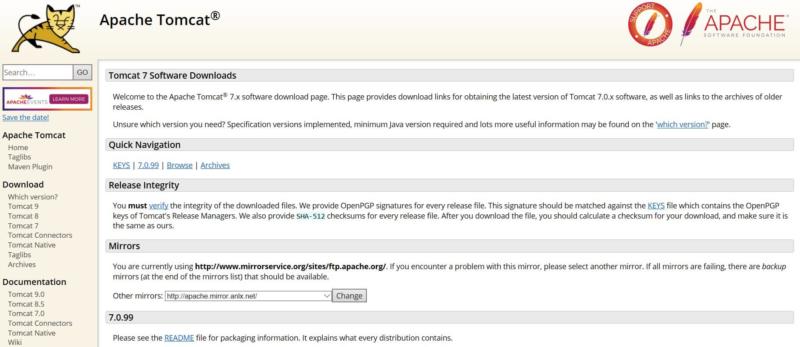
Once you’re there, scroll down and find the latest Windows Service Installer:
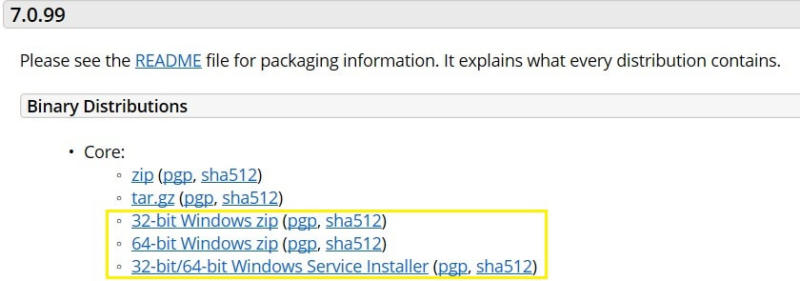
Next, select either Run or Save, depending on when you’d like to finish the installation. When you do run the application, the Setup Menu will appear:
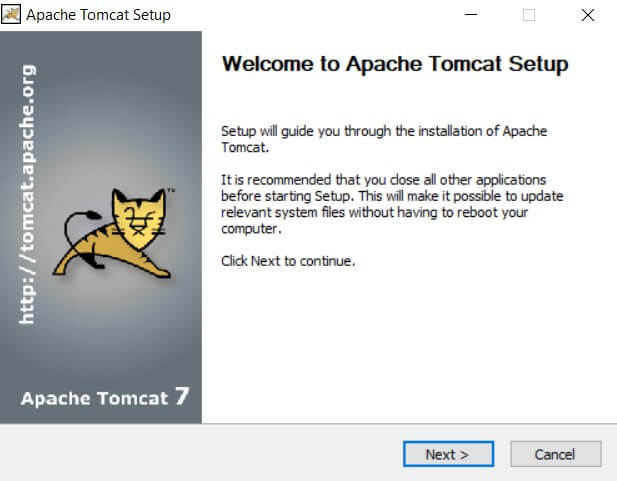
The steps listed here will walk you through your options. First, you’ll be able to choose which components you want. These include a startup menu button, the Manager, and the Host Manager:
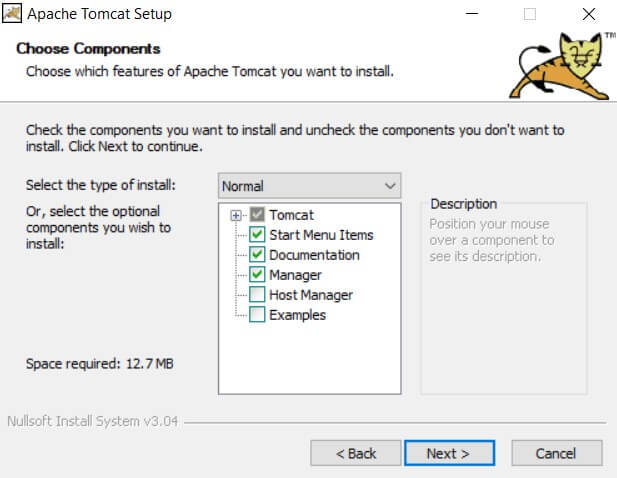
You’ll also be taken to a Configuration Menu. Here, you’ll be able to confirm your service name and shutdown port:
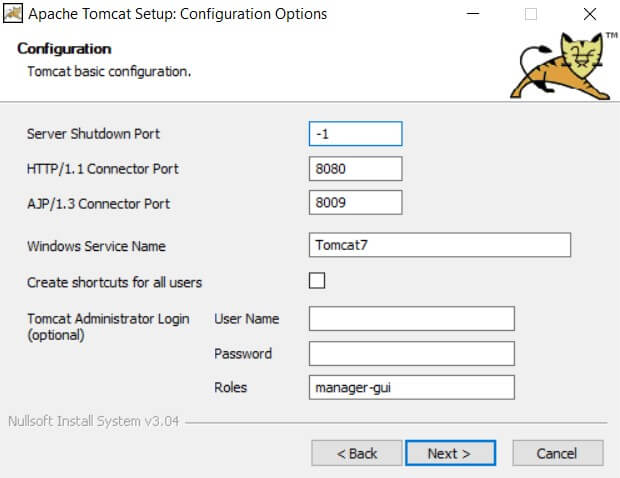
Finally, find the location of your JDK installation path:
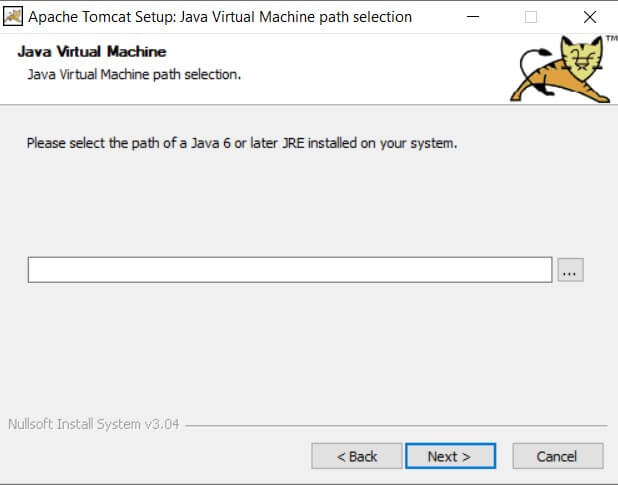
Then, you’re finally ready to complete the installation. To test and ensure that Tomcat is up and running, use any web browser to go to:
http://localhost:8080/
It should look like the example shown below:
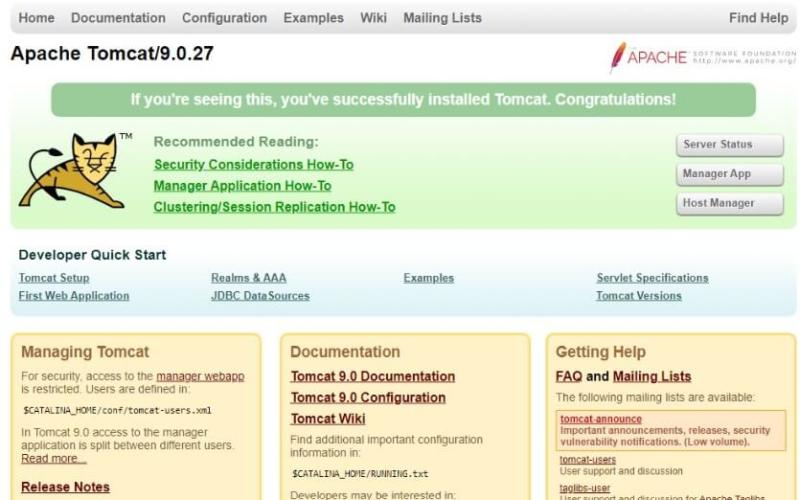
From here, you can get started on your next project. Of course, setting Tomcat up for local development isn’t a complete solution if you want to deploy live sites on it.
Fortunately, A2 Hosting offers several Apache Tomcat hosting solutions that can be adapted to your needs. Plans start at $5 per month and scale up to $15 per month. They supply anywhere from 20–50 GB storage, as well as our money-back guarantee and Guru team support.
Apache Tomcat Conclusion
There are many benefits to having a Java web server, especially Apache Tomcat. It’s lightweight, stable, and intuitive to install. Alongside a thriving online community, there are plenty of other advantages that come with choosing this platform.
Between its speed, customization options, and open-source nature, this is a top-notch solution for developers of all stripes. Plus, with an A2 Hosting plan and our support team behind you, you’ll never feel lost when transitioning to Tomcat.
Image credit: Tranmautritam.

